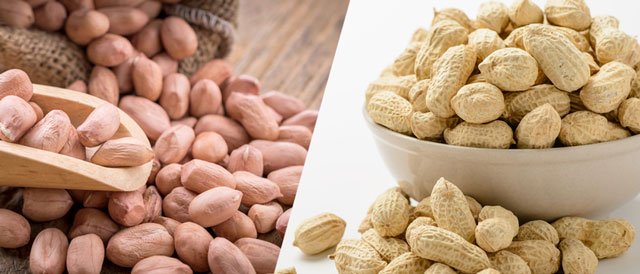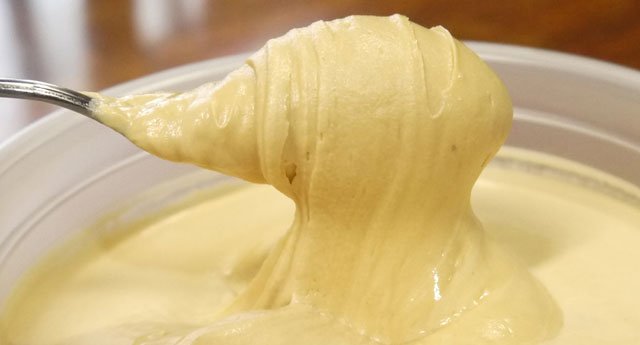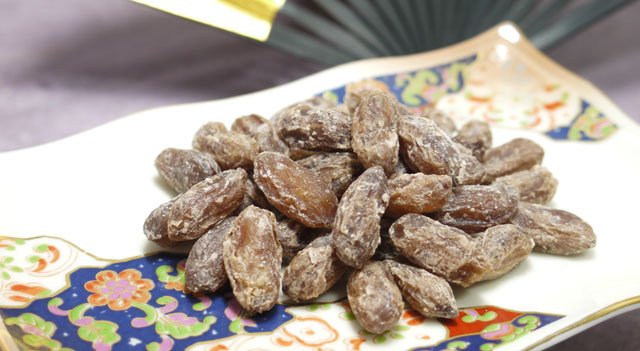There is a trick to preserving peanuts. We, the staff of peanut specialty stores, introduce the methods we usually use in our work to prolong the flavor of peanuts so that you can easily do the same at home! Enjoy peanuts longer with optimal storage.
The method of preservation depends on the condition of the peanuts.
Peanuts are stored in very different ways depending on whether they are dried, roasted, boiled, etc. Choose the right preservation method for each peanut! That is the key to long-lasting flavor. What condition are the peanuts you want to store?
Quick Guide to Peanut Storage
| Peanut condition | Storage location and guidelines |
|---|---|
| Raw peanuts for boiling | Refrigerate and boil within 1 week. |
| Dried raw peanuts, seeds | Refrigerated for at least 1 year. |
| boiled peanuts | Refrigerated for less than 1 week. Frozen for more than 1 year. |
| Roasted peanuts | 2-3 months at room temperature. At least 6 months frozen. |
| peanut butter | 3-6 months at room temperature. At least 6 months at refrigerated temperature. Depends on the manufacturer. |
| Peanuts boiled in sugar | 3-4 weeks at room temperature. At least 6 months frozen. |
How to store freshly dug raw peanuts
- Optimal location → Vegetable or refrigerator compartment of refrigerator
- Shelf life → 1 week or less
Freshly dug raw peanuts, available from the end of August to the end of October, contain a lot of water and are slightly moist to the touch. Freshly dug raw peanuts are easily damaged and cannot be stored for long periods of time as they are.
掘りたて生落花生の茹で方はこちら(English article is coming soon)
In the fall and winter, freshly dug peanuts can be stored for a year or more by naturally drying them in a well-ventilated place out of the rain for about a month until they are dry and crispy. (See next section).


Raw peanuts lined up at the grocery store in the summer are almost always freshly dug.
How to store dried raw peanuts
- Optimal location → Refrigerator (vegetable compartment is not suitable due to high humidity)
- Shelf life → more than 1 year
Since dried raw peanuts in the refrigerator can be stored for over a year, we peanut vendors also store peanuts in this dried raw peanut state. Since the shelf life of raw peanuts is quickly shortened when they are heated, it is best to cook only what you will use and store the rest in the refrigerator as dried raw peanuts.
乾燥生落花生の煎り方はこちら(English article is coming soon)
Incidentally, freezing peanuts provides higher quality and a longer shelf life. (Note that unshelled peanuts tend to peel easily when frozen naked, so they should be sealed in a plastic bag before freezing and allowed to thaw naturally while sealed before opening.)
This storage method is acceptable for dry fresh peanuts, both shelled and unshelled.
How to Store Peanut Seeds
- Optimal location → refrigerator (never frozen)
- Shelf life → more than 1 year
If you want to store freshly dug raw peanuts grown at home as seeds until next year, dry them thoroughly and refrigerate them. Sealing them in plastic bags is even better. As a precaution, never freeze them. If frozen, the slight residual moisture will coagulate and damage the internal cells, reducing their ability to germinate.
How to store boiled peanuts
- Best place → Refrigerator for immediate consumption. Freezer for long-term storage.
- Shelf life → Refrigerated within 1 week. Frozen for more than 1 year.
The best way to keep them tasty for the longest is to store them in the freezer and defrost them in the microwave for a minute or two only before eating. Retort pouch products that can be stored at room temperature are also available, but they should also be frozen once opened.
Keep moist peanuts at low temperatures!
How to store roasted and fried peanuts
- Best Place → Room temperature for immediate consumption. Refrigerator or freezer for long-term storage.
- Shelf life → 2-3 months at room temperature. 6 months or more when frozen.
Cooked, crispy, dry peanuts should be kept away from temperature, oxygen, and moisture. They are at their best when sealed in a plastic bag with a deacidifier or desiccant.
They can be stored at room temperature, but they will last longer if sealed in a bag and stored in the refrigerator or freezer. (If stored at low temperatures, allow the product to thaw naturally at room temperature for a while before opening.)

Oxygen absorber and sealed in a plastic bag is a sign of good taste.
How to Store Peanut Butter
- Best Place → Room temperature for immediate consumption. Refrigerate for long-term storage.
- Shelf life → 4-6 months at room temperature. At least 6 months at refrigerated temperature.
(*Because there are many variations of peanut butter products available from different manufacturers, this information is for reference only and should be stored according to the storage instructions on the product.)
Storing it at room temperature is not a problem because, surprisingly, peanut butter is a very dry food. Therefore, peanut butter is very sensitive to water, so be careful not to get water on your butter knife when scooping.
Refrigeration will prolong the flavor. If you are not going to eat them for a while or if you are worried about storing them at room temperature during the summer, close the lid tightly and put them in the refrigerator. (If stored at low temperatures, allow them to thaw naturally at room temperature for a while before opening the package to avoid condensation on the inside.)
It will harden when stored in the refrigerator, but will return to normal temperature. Also, if the oil and peanuts separate into two layers, stir them together. Both are completely safe in terms of quality.

Peanut butter is made by grinding roasted peanuts. So preservation is the same concept as roasted peanuts.
How to Store Peanuts boiled in sugar
- Optimal location → Room temperature for immediate consumption. Freezer for storage.
- Shelf life → 3-4 weeks at room temperature. At least 6 months when frozen.
Peanuts boiled in sugar, which is called “Ama-natto” in Japan, is in a semi-raw state that contains a little moisture, so if you are not careful, mold can grow on it. For long-term storage, freezing is essential. The shelf life of ama-natto stored at room temperature varies depending on the season. Please refer to the guideline below.
- Store at room temperature for about 3 weeks during the hot months of May-October.
- Store at room temperature for about 4 weeks during the cool months of Novemver-April.

Room temperature for immediate consumption, cold zone for long-term storage!
Three things to keep in mind when storing peanuts
Avoid oxidation and spoilage at low temperatures.
The quality of peanuts lasts longer when stored in a cool environment. Moist peanuts are prone to spoilage at room temperature, and dry peanuts are also prone to oxidation and flavor deterioration in a hot environment.
Seal to avoid oxidation, moisture, and odor transfer.
Peanuts are a food that absorbs odors easily. Care should be taken to avoid the easy transfer of odors from items in the same space. The smell of smoke from a blaring racket in a peanut warehouse or the scent of flowers in a consignment warehouse are common peanut supplier mistakes.
In addition, dried peanuts easily absorb moisture, which can cause mold. Sealing them in plastic bags with air removed will take care of all measures against oxidation, moisture, and odor transfer.
To eat well, eat it up as quickly as possible.
Even dried raw peanuts that can be refrigerated for more than a year gradually lose their flavor. Roasting further accelerates the loss of flavor, so even with the best storage methods, the most important thing is to eat them as soon as possible for best flavor.
Related articles on peanut preservation
Preservation of Omasari(Jambo peanut)

Difference between the two raw peanuts
















